Ski Touring Airbag Shopping Links
Arcteryx Voltair
Arva Reactor
BCA Float
Black Diamond (and Pieps) Jetforce
Mammut RAS backpacks
Scott Alpride
As always, we’re getting excellent support from the ski touring airbag industry. Lots of samps kicking around WildSnow HQ. Here is something for you balloon wonks. We’ll keep this updated as new product comes our way (e.g., we didn’t cover ABS yet). We’ll also do a few first-looks at the packs, but frankly, I’m more motivated to do “real” reviews provided by myself and our esteemed cadre of guest bloggers.
In terms of shopping recommendations, you now have a clear division between the electronic and gas operated rucksacks. As it stands, fan packs are heavier and costly, but much easier to practice and travel with. Gas packs are efficient and what we tend to use simply because they’re lighter. But due to annoying inconsistencies and vagueness in airline regulations regarding gas cylinders, I would generally not attempt to fly with a filled cylinder. Instead, I’d arrange to obtain or fill at destination — or use an electronic pack. I’m not that worried that a cylinder could be confiscated (and sometimes flying with filled cylinders does work out), of more concern is additional hassles and delays when flying these days is already fraught with such problems. Life with United Hairlines is already hard enough.
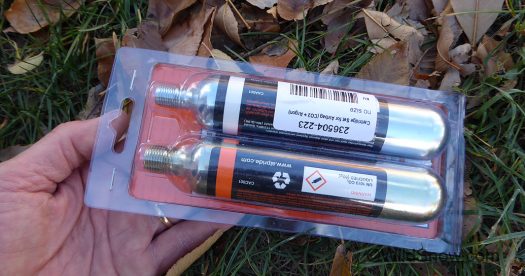
Scott system is different as it uses two cylinders, one argon and one carbon dioxide. 476 grams for the pair, filled.
Notes:
Essentially, the compressed gas you carry with your airbag is a “power system” that not only directly inflates the balloon, but also provides energy that sucks ambient air into the bag via a valve system (usually a “venturi”). Thus, it could be said that the gas is a form of “battery” though it’s not electrical. With that in mind, for the purpose of mentation I included battery weights for Black Diamond and Arcteryx.Bear in mind that weights for filled cylinders will vary by a few grams due to variations in final gas fill pressure, more, we usually weigh without protective caps that can be as heavy as 8 grams, but weights you obtain elsewhere may include the caps. Thus, when comparing filled cylinder weights always consider the big picture and don’t obsess on a few grams either way.
A word on terminology: While you could call these “tanks,” doing so implies larger quantities of highly compressed gas. Or, perhaps call them “cartridges?” But that alludes to firearms. “Canister” works as well, but is it a beer can? Terminology can lead to overwrought concerns about safety; especially regarding air travel. Overheard at TSA baggage check: “I knew I had a cartridge in my luggage, but ignore the gunpowder residue on my hands, I was at the firing range yesterday, and the “cartridge” in my baggage doesn’t have anything to do with my hands…” Thus,in our opinion the term “cylinder” is best — less threatening.
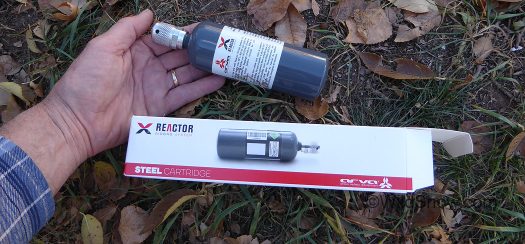
Arva Reactor downsized steel cylinder, argon, filled, 536 grams. It’s 438 grams empty.
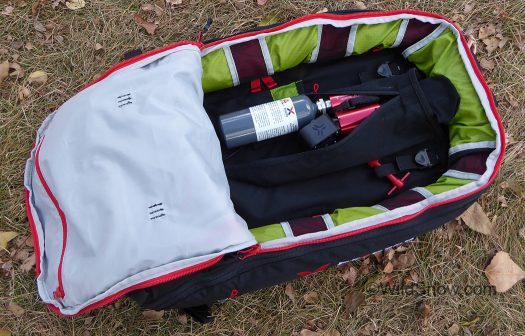
Arva Reactor 18 with the new argon cylinder, this rucksack is quite large inside for something called an “18 liter”, would work for me as my normal day kit, while most of the 30 liter packs I’ve been evaluating are too commodious. Weighs 2067 grams (4.6 pounds). Very nice. Should we start a new class of airbag pack weight, the “2.5 liter rucks?”
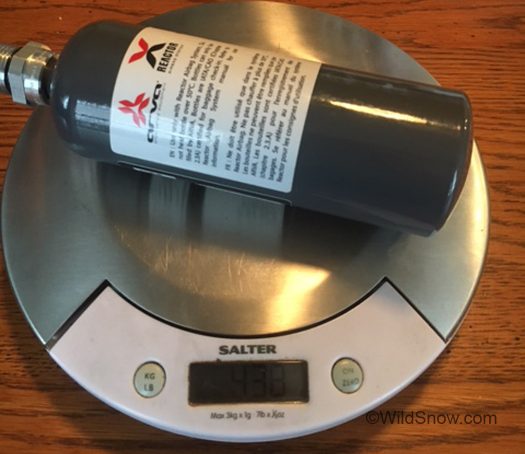
Arva Reactor empty, 438 grams.
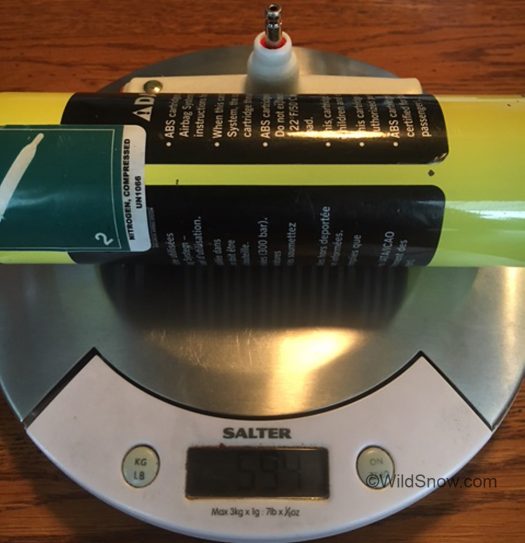
Original (2015-2016 and earlier) Arva nitrogen cylinder, empty = 594 grams, filled = 694 grams. Now upgraded to argon cylinder above for a 58 gram savings.
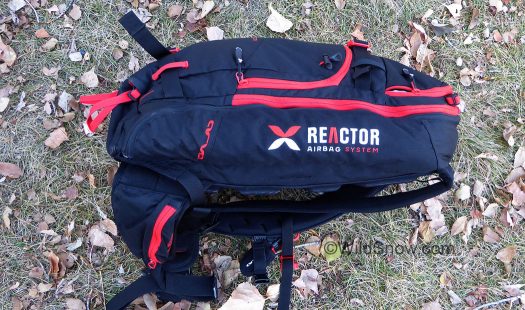
Arva Reactor 18 has surprisingly adequate cargo volume, weighs 2067 grams with new argon downsized cylinder.

Mammut, Snow Pulse, air, 694 grams. Interestingly, this cylinder is filled to 3,000 PSI, that’s quite a bit of pressure. BCA is filled to 2,700 PSI and weighs 654 grams full.
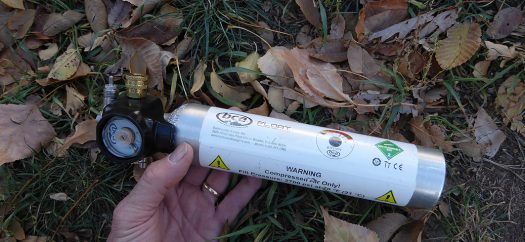
Here is the BCA, 654 grams full, nicely downsized ‘canister’ somewhere in size between the long Mammut and the short little Arva. It’s about 606 grams empty.
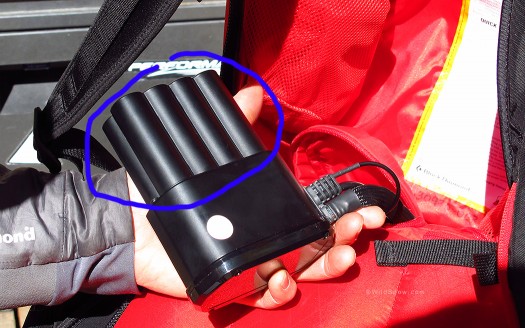
Black Diamond Jetforce Battery is attached to the backpack electronics with small screws. Voltair also has internal electronics in the battery case, clearly has more excess power than Jetforce, but also is attached to a small “black box” that obviously provides more electronics. Voltair battery 774 grams, plus black box at 150 grams for a total of 924 grams. Black Diamond battery assembly weighs 540 grams (does not have an additional “black box”). It’s our understanding that the ‘fan’ mechanicals in the electronic packs weigh significantly more than the simple plastic venturi pipes in the gas packs. Combine that with the weight of the batteries, and clearly you can end up with a lighter weight airbag if you use gas for your power.
Regarding the fan packs, Black Diamond appears to be ok with enough reserve power for about 4 inflations, while Arcteryx felt they needed a much bigger battery that can go 14 rounds or more (both at room temperature). Main idea here is these batteries have less available power as they get colder, so you need the reserve to make sure you get one good inflation if you happen to be skiing Vinson at 30 below zero fahrenheit. Such a huge discrepancy in the two designs causes one to wonder. Stranger still, with a lighter battery the BD pack has only slightly less mass than the Arcteryx (see spreadsheet below)! Are we still in the sophomore stage with electronic airbag design engineering? Such things indicate we probably are.
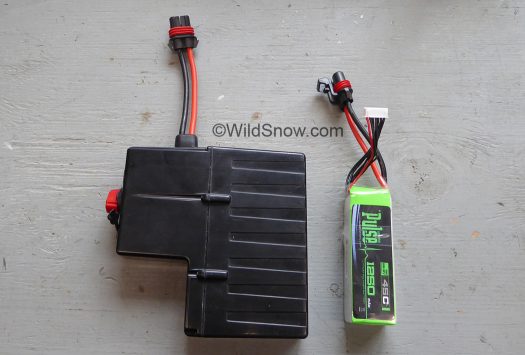
Arcteryx Voltair OEM battery to left at 774 grams, experimental LiPo 1250 mAh to right only weighs 250 grams and easily powers several balloon inflations at higher temperatures, but probably doesn’t have enough excess power for redundant safety and cold weather performance. Interesting, however, that a battery that weighs significantly less than the gas cylinders can power an electronic pack. Note that the Arcteryx also has an additional black box located above the battery, it weighs about 150 grams. In our comparison to Black Diamond, which appears to have most electronics integrated with battery, we add the Arcteryx black box weight of 150 to the battery 774, for a comparo weight of 924 grams.

Better than a date with a supermodel. Mammut Snowpulse carbon cylinder, nitrogen filled, 318 grams. Winner of the overall earthling cylinder weight wars? We are unclear as to if this is a 100% carbon cylinder, or carbon wrapped aluminum. Only available in the ever enlightened EU (and probably Canada), might be possible to transport during individual air travel (that’s how we got ours) but can’t be shipped as a commercial product.
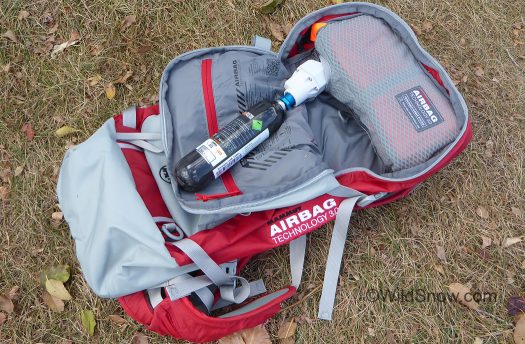
Mammut Light RAS 3.0, 30 Liter, configured with 318 gram carbon cylinder, pack available this fall (carbon cylinder only available in Canada & Europe). Excellent cargo volume and nice features, 2075 grams (4.5 pounds). This weight class gets down to the point where you’re carrying nothing more than the weight of an over-built rucksack from the 1980s.
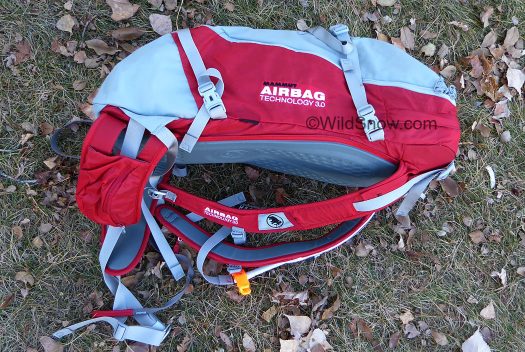
Mammut Light RAS 3.0 30 liter in my opinion has excellent cargo volume, especially so when configured with smaller carbon cylinder.
Now, before everyone gets their balloons in a bunch, yes indeed, how much the airbag and associated plumbing-mechanicals weigh is of course just as important as the cylinders and batteries. Everything goes together. Weighing those components is somewhat tricky as some do not easily divorce from the backpack, but we’ll work on it. Meanwhile, we hope you enjoy this overview of what is what in energy storage.
Shopping Links
Arcteryx Voltair
Arva Reactor
BCA Float
Black Diamond (and Pieps) Jetforce
Mammut RAS backpacks.
Scott Alpride
WildSnow.com publisher emeritus and founder Lou (Louis Dawson) has a 50+ years career in climbing, backcountry skiing and ski mountaineering. He was the first person in history to ski down all 54 Colorado 14,000-foot peaks, has authored numerous books about about backcountry skiing, and has skied from the summit of Denali in Alaska, North America’s highest mountain.

